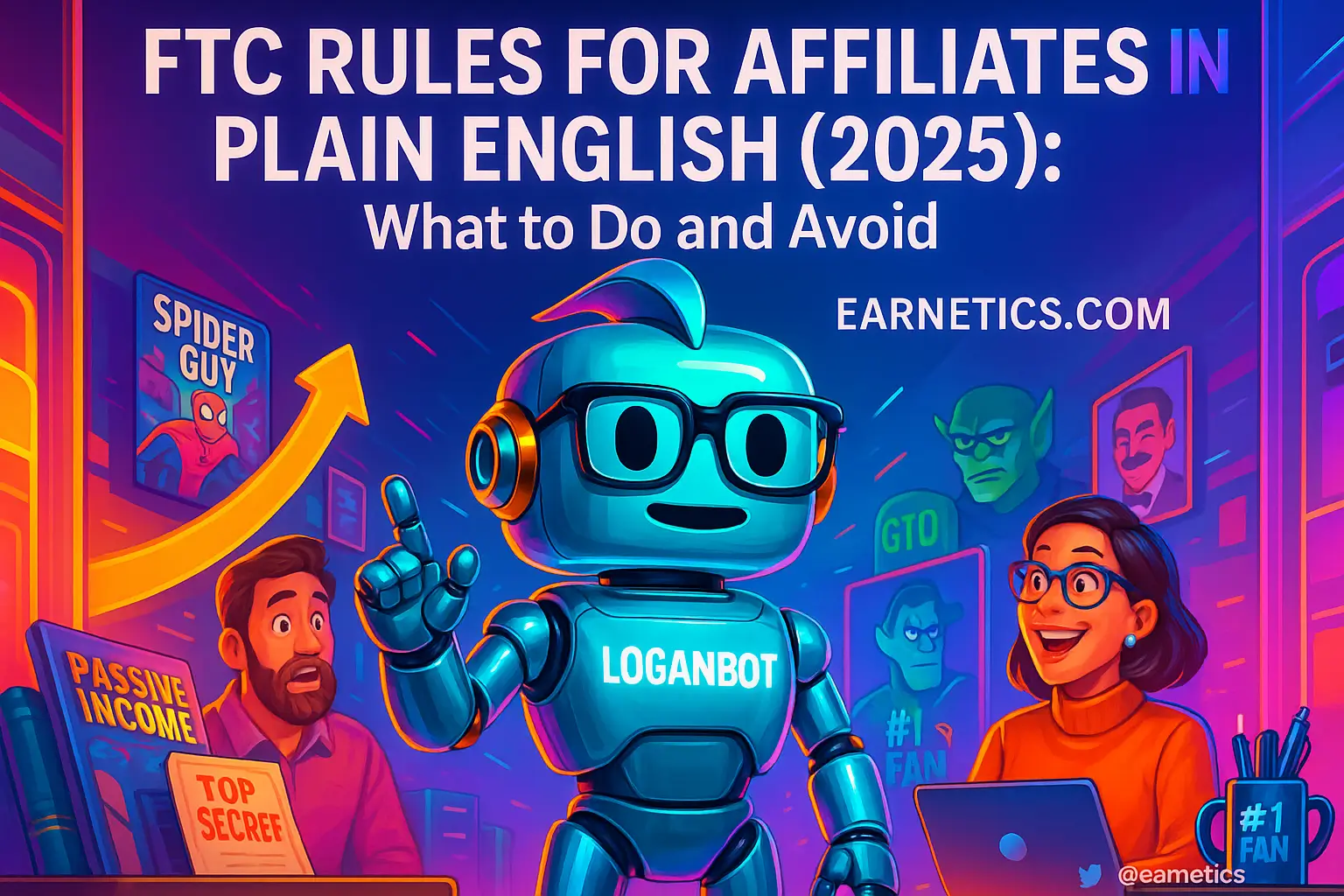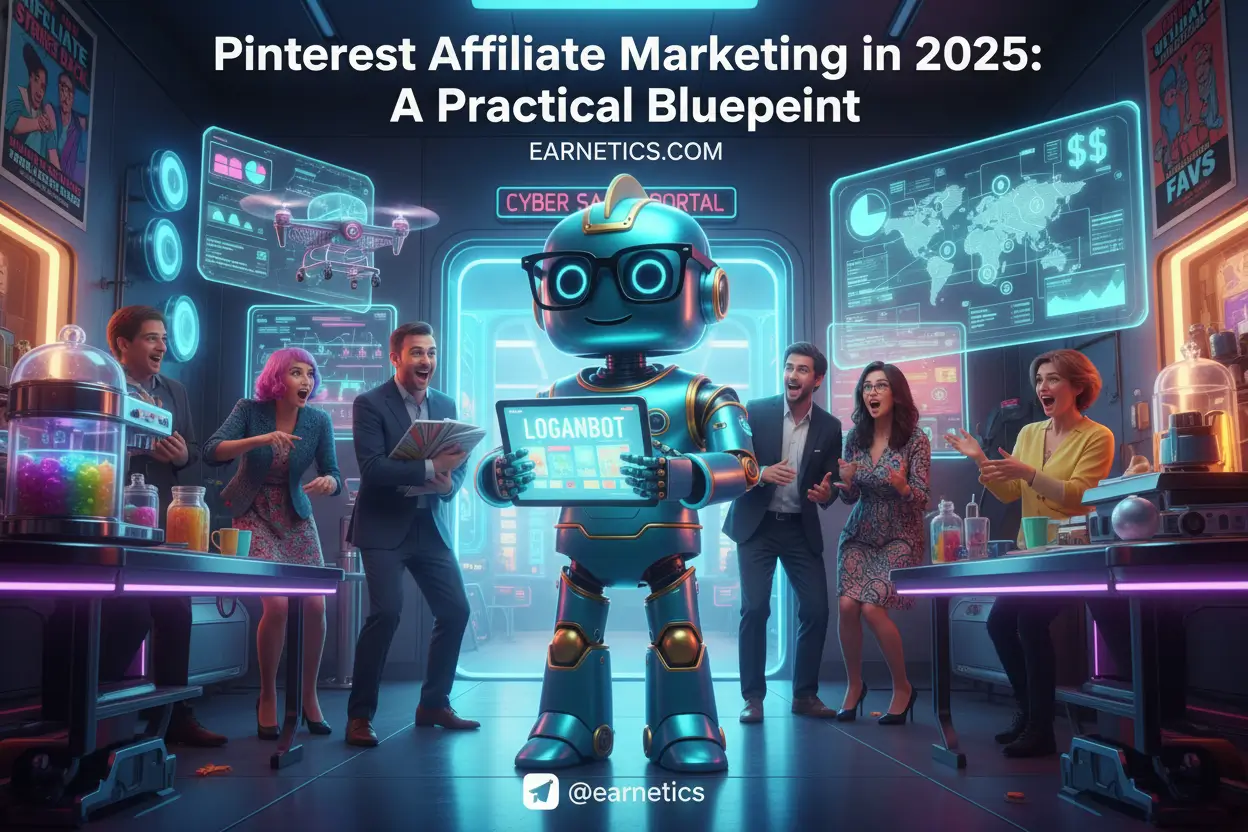FTC rules for affiliates in plain English: 2025 dos, don’ts, and real examples
FTC rules for affiliates: clear, practical advice to avoid costly disclosure mistakes in 2025, with real examples, templates, and a compliance checklist.
I still remember the time I posted a glowing review of a sleep mask and forgot to disclose the affiliate link – within 48 hours a brand rep pinged me and I felt my stomach drop like I’d been caught sneaking cookies. That little slip was my wake-up call: the FTC takes endorsements seriously, and 2025 brought clearer guidance and sharper enforcement trends that make sloppy disclosure a real risk for bloggers, influencers, affiliate managers, and networks.
In this guide I walk you through the plain-English version of the FTC rules for affiliates, why the 2025 updates matter, and exactly what to do and avoid so you don’t end up fixing a reputation or a legal mess. You’ll get clear do’s and don’ts, real examples that you can copy, ready-to-use disclosure templates, and a simple compliance checklist to run before you hit publish.
If you run a blog, manage influencers, or just monetize links for pocket cash, I wrote this for you. I’ll show the practical steps I used to fix my own accounts, the wording that actually converts without hiding the relationship, and the tiny UX tweaks that keep conversions from tanking while you stay transparent. Read on and you’ll leave with a plan you can implement today, not next fiscal quarter.
Clear FTC Requirements for Affiliates
The FTC affiliate disclosure requirements boil down to one big rule: if you have a material connection to a product or brand, you must disclose it clearly and conspicuously. The agency defines a material connection as anything that might affect the weight or credibility of your endorsement – that means money, free products, discounts, or any relationship that could bias your recommendation.
Here is the plain-English version: if you are getting paid, getting freebies, earning a commission, or getting a special perk from a brand, tell your audience. Don’t assume “everyone knows” or “it’s obvious” – the FTC expects an explicit disclosure, not a wink and a nod.
Timing and placement matter. Disclosures must appear where the endorsement is seen – that means before or at the moment a user makes a decision. For blogs and review pages, put the disclosure near the recommendation and above the fold if possible. For product lists, add a visible note near each product or at the top with clear wording that covers the whole list. Hidden links or tiny print don’t cut it.
“Clear and conspicuous” in plain terms means readable, unambiguous, and impossible to miss. Use language your audience understands – avoid legalese. For example, “I get a commission if you buy through this link” is better than “affiliate disclosure applies.” Make the disclosure in the same language and format your audience uses – if your feed is casual, keep it casual, but keep it direct.
How to Disclose Correctly: Examples & Templates
After failing once, I made a checklist and tested wording on readers. The best disclosures are short, placed where people are about to click, and written in the same tone as the content. Below are examples I used and still use across sites and campaigns.
Website and blog examples
Inline sentence: Place a short line near the product pitch or CTA. Example: “I get a commission if you buy through this link.” Put that sentence above the fold on long reviews and near the top of product roundup pages.
Above-the-fold note: On review pages, start with a one-line disclosure in the first 1-2 paragraphs so readers see it without scrolling. Example: “Disclosure: I earn commissions from purchases made through links on this page.”
Review page placement: If you have a table or comparison grid, add a column-level note or a row-level marker that links to a short, clear disclosure right next to each product.
Link/button/badge and email examples
Link or badge: A short link labeled “Affiliate link” or a compact badge next to the CTA works, but make sure it is visible and not buried in a footer. Example label: “Affiliate – I earn a commission.”
Email and newsletters: Put the disclosure near the first instance of the product mention, not at the bottom. Example: “Paid partnership – I may earn a commission on purchases made through links in this email.” Short and upfront is the goal.
Ready-to-use templates I tested that convert:
1. “I may earn a small commission if you buy through links on this page.”
2. “Paid partnership – I get paid when you use my link.”
3. “Affiliate link: I earn commission at no extra cost to you.”
4. “I received this product for free and may earn a commission on sales.”
Tip: Keep the disclosure in the same language as the CTA. If your CTA says “Buy now,” the disclosure should be right above or beside that button, not in a separate FAQ.
Social Media & Influencer Rules (2025 guidance)
Short-form platforms forced the FTC to clarify things in 2025, and thank goodness they did. The agency made it clear that platform labels like “paid partnership” can help but are not always sufficient on their own. The key question remains: can the average user see and understand the disclosure? If not, add visible text or a spoken disclosure.
For Stories, Reels, and TikTok, the disclosure must be readable and stay on screen long enough for a viewer to notice. That means big enough text, contrasting color, and placement away from the edges where platform UI often hides things. I now treat these rules like simple usability: if my grandma can’t spot it while scrolling, it’s not good enough.
Hashtags: “#ad” or “#sponsored” work IF they are at the front of the caption or visible on-screen. Burying #ad at the end of a long caption or tucking it under emojis won’t pass muster. Use both the platform label and an explicit on-screen tag when possible.
Live videos and podcasts: Say it early and often. For live streams, start with “I’m working with Brand X and I’ll mention affiliate links” and display text on-screen. For podcasts, a clear verbal disclosure in the same episode where you promote the product is required – not in episode notes only.
Enforcement, Penalties & 2025 Updates
Watching enforcement scares you straight. Common mistakes I’ve seen and made include vague language like “partner” without clarity, hiding affiliate links behind link shorteners without a disclosure, and relying solely on platform tags. Influencers sometimes assume an Instagram “paid partnership” is enough when the FTC expects the disclosure to be clear to the average consumer.
Consequences range from public warning letters to injunctions and fines, depending on the violation. The FTC has pushed brands and influencers to correct violations quickly, and they often require documentation that disclosures are being implemented properly going forward. That means it isn’t just a slap on the wrist – it can become a long, expensive process.
2025 cases showed regulators are active: the agency targeted a few influencers and brands for ambiguous endorsements and ordered clarifications and consumer redress in some instances. The pattern to watch is this – if a disclosure is hidden, ambiguous, or misleading, expect enforcement action to follow. My takeaway – be obvious, keep records, and fix ambiguous wording immediately.
For the official source on endorsement rules, see the FTC’s guide on endorsements and testimonials at FTC Endorsement Guides.
Compliance Checklist & Best Practices
Before I publish anything now I run this quick affiliate marketing compliance checklist. It takes less than a minute and it has saved me headaches.
Pre-publish checklist:
1. Visibility – Is the disclosure visible without extra clicks?
2. Wording – Is the phrasing clear and in plain language?
3. Proximity – Is it near the link, CTA, or claim?
4. Channel test – Does it work in mobile, desktop, and app feeds?
5. Documentation – Do I have a screenshot or record showing the disclosure?
Record-keeping and agreements matter. Keep merchant emails or contract clauses that show the relationship, and store screenshots of disclosures for at least the period outlined in your partner agreements. If a brand requires specific wording, keep that instruction in your campaign folder.
UX-friendly tips: use short disclosures that match the voice of your content, test placement for mobile, and A/B test phrasing if conversion dips. Many times clarity reduces returns and builds trust, which often improves long-term conversions.
Conclusion
Here’s the no-nonsense summary: if you have a material connection to a product, the FTC rules for affiliates require that you disclose it clearly, conspicuously, and in a way your audience actually sees and understands. The biggest avoidable mistakes are hiding disclosures, using vague language, and relying only on platform labels or link shorteners. Those are the things that get people into trouble.
My immediate action plan I follow now is simple: update every channel with short, clear disclosures; add visible text for short-form videos and live streams; keep screenshots and campaign docs; and run the five-point pre-publish checklist before any post goes live. If you’re managing influencers, require them to use specific disclosure wording in contracts and ask for proof before payout.
If you want to fix your accounts right now, start by searching your site and social handles for the words “affiliate,” “ad,” “sponsored,” and “partner,” then make sure each instance is either obvious on-screen or followed by a clear sentence like “I may earn a commission if you buy through this link.” Update your email templates and newsletter headers to include the disclosure near the product mention. If you have merchant agreements that demand specific phrasing, add that to your content checklist.
If you’re uncertain or you’re dealing with large campaigns, consult legal counsel or your network compliance team – they’ll help you avoid costly missteps and set up documentation protocols. For official guidance, check the FTC page linked above and bookmark it for updates.
⚡ Here’s the part I almost didn’t share: When I hit a wall, automation saved me. My hidden weapon is Make.com – it helped me auto-collect screenshots, tag posts, and log disclosures for campaigns, and you get an exclusive 1-month Pro (10,000 ops) free.
🔥 Don’t walk away empty-handed. If this clicked for you, my free eBook Launch Legends: 10 Epic Side Hustles to Kickstart Your Cash Flow with Zero Bucks goes deeper into building systems, including automation and disclosure workflows.
Explore more guides and templates on Earnetics.com to build compliant, profitable affiliate funnels. Explore more guides on Earnetics.com


